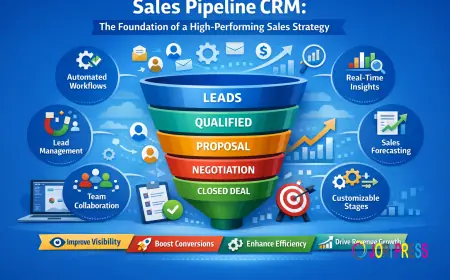Cyber Defense: Your Digital Shield in a Connected World
Cyber defense is the practice of protecting networks, systems, and data from cyber threats like hacking, malware, and phishing attacks. It combines proactive measures—such as threat monitoring and penetration testing—with reactive strategies like incident response. By building strong defenses, organizations can prevent breaches, minimize damage, and ensure business continuity in today’s fast-changing cyber landscape.

In today’s hyper-connected world, we’re surrounded by technology — smartphones, laptops, cloud services, IoT devices, and more. This connectivity makes our lives easier, but it also opens the door for cybercriminals to slip in unnoticed. That’s where cyber defense steps in — the digital shield that protects individuals, businesses, and governments from online threats.
Whether you run a small business, manage corporate IT, or simply browse the internet daily, cyber defense matters to you. Let’s explore what it is, why it’s so important, and how you can strengthen it.
What is Cyber Defense?
Cyber defense refers to the strategies, tools, and practices used to protect networks, devices, and data from cyberattacks. It’s not just about having antivirus software or a firewall; it’s a complete security mindset.
Think of it like protecting your home:
-
You lock the doors (firewalls)
-
Install an alarm (intrusion detection systems)
-
Use security cameras (monitoring tools)
-
Teach your family to be cautious about strangers (cybersecurity awareness training)
A solid cyber defense strategy works the same way — using both technology and people to keep threats out.
Why Cyber Defense is Crucial Today
Cybercrime is no longer limited to tech-savvy hackers in dark rooms. Criminals now use phishing emails, ransomware, social engineering, and even AI-driven attacks to target anyone — from large corporations to individuals.
Some eye-opening facts:
-
The average cost of a data breach in 2024 exceeded $4.5 million globally.
-
Small businesses are targeted in 43% of cyberattacks — but many lack the resources to recover.
-
A ransomware attack can halt business operations for days or weeks.
Without proper cyber defense, these attacks can result in:
-
Loss of sensitive data
-
Financial damage
-
Reputational harm
-
Legal consequences due to privacy violations
Core Elements of Cyber Defense
A robust cyber defense strategy typically includes the following components:
1. Firewalls and Network Security
Firewalls act as your network’s gatekeeper, blocking unauthorized access while allowing safe communication. Coupled with intrusion detection and prevention systems, they form your first line of defense.
2. Endpoint Protection
Every device connected to your network — from laptops to smartphones — needs protection. Endpoint security tools ensure that malware or suspicious activity is stopped at the device level before it spreads.
3. Data Encryption
Even if attackers get past your defenses, encryption ensures the stolen data remains unreadable. It’s like having a safe inside your locked house.
4. Regular Software Updates & Patch Management
Cybercriminals often exploit outdated systems. Keeping your software updated seals security gaps before hackers can take advantage of them.
5. Threat Intelligence
Staying informed about the latest cyber threats is critical. Threat intelligence feeds provide early warnings about new malware, phishing tactics, and vulnerabilities.
6. Incident Response Planning
No system is 100% invincible. A well-prepared incident response plan ensures quick action to minimize damage and recover faster after an attack.
7. Security Awareness Training
Human error is still the #1 cause of cyber breaches. Training your staff — or even yourself — to recognize suspicious activity is just as important as installing security software.
Types of Cyber Threats You Should Know
To defend yourself, you need to understand what you’re up against. Some common threats include:
-
Phishing – Fraudulent emails or messages designed to trick you into revealing personal information.
-
Ransomware – Malicious software that encrypts your files until a ransom is paid.
-
DDoS Attacks – Overloading a website or server to make it unavailable.
-
Malware – Viruses, trojans, and spyware that damage or steal data.
-
Insider Threats – Risks from employees or partners who misuse their access.
Best Practices to Strengthen Cyber Defense
Here are simple but powerful steps you can take:
-
Use strong, unique passwords for all accounts — and consider a password manager.
-
Enable multi-factor authentication (MFA) wherever possible.
-
Back up your data regularly and store backups offline.
-
Limit user access — only give employees access to the data they need.
-
Monitor your systems for unusual activity.
-
Stay informed — cyber threats evolve, and so should your defense strategy.
The Future of Cyber Defense
As technology advances, so do cyber threats. Artificial intelligence is becoming a double-edged sword — while it helps detect attacks faster, it’s also being used by hackers to create more sophisticated threats.
Future cyber defense will rely heavily on:
-
AI-driven threat detection
-
Automated incident response
-
Zero Trust security models (never assume any user or device is safe by default)
-
Advanced behavioral analytics to spot unusual activity before damage occurs
Final Thoughts
Cyber defense isn’t just an IT problem — it’s a business, personal, and societal responsibility. The internet is like a digital city, and without security, it can quickly turn into a dangerous place.
By combining technology, awareness, and proactive strategies, you can build a strong defense that keeps your data safe, your business running, and your peace of mind intact.
If you want to make sure your systems are well-protected, professional cyber defense services can assess your vulnerabilities, implement best practices, and monitor threats 24/7. In today’s cyber landscape, it’s always better to be safe now than sorry later.
What's Your Reaction?
 Like
0
Like
0
 Dislike
0
Dislike
0
 Love
0
Love
0
 Funny
0
Funny
0
 Angry
0
Angry
0
 Sad
0
Sad
0
 Wow
0
Wow
0



















































